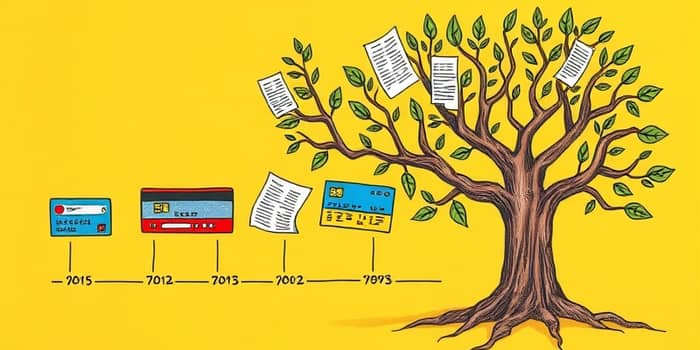
Understanding how the age of your credit accounts shapes your overall financial profile can empower you to take targeted action. This article guides you through the essentials of calculating, interpreting, and improving your average account age.
The term credit maturity captures both a borrower’s credit profile development and institutional risk assessments. In retail scoring, it measures how seasoned your credit behavior appears. In organizational models, it gauges framework sophistication.
Average account age is simply the mean duration of all open credit accounts. Scoring models like FICO and VantageScore integrate this metric heavily. By tracking your account history, you reveal patterns of financial responsibility.
To compute the average account age, add the lifespan of each open account in years or months, then divide by the total number of accounts. This yields a snapshot of how established your credit history is.
For example, if you hold three accounts with ages of 2, 5, and 10 years, your average is (2 + 5 + 10) ÷ 3 = 5.7 years. This figure directly impacts scoring weight.
Credit bureaus value maturity. Under FICO, 15% of your score derives from the length of credit history, which includes your average, oldest, and newest accounts. VantageScore assigns roughly 20% to credit age, bundling average and extreme ages into a “depth of credit” calculation.
Maintaining long-standing accounts signals to lenders that you can manage credit over time. Conversely, opening new accounts always lowers your average age temporarily.
While no official threshold exists, industry observers often cite a 5-year average account age as a strong benchmark. Having at least one account open for over a decade is especially beneficial.
As of 2024, U.S. consumers in their 40s and 50s often exceed average ages of 7 years, reflecting steady credit histories and yielding higher scores. Additionally, negative items such as late payments typically fall off reports after seven years, allowing age metrics to rebound.
Enhancing your average account age is straightforward with patience and selective actions.
Remember that closing an old account—even unused—can reduce your average and harm your score. Evaluate annual fees and benefits before making closure decisions.
In the U.S., credit models must remain age-neutral to comply with fair lending laws. They cannot penalize applicants solely for biological age, only for credit maturity metrics. Institutions sometimes segment applicants via “age-split scorecards,” but they must ensure no disparate impact on protected groups.
From an organizational standpoint, frameworks like the Basel Committee’s maturity model categorize risk management quality from basic to advanced IRB levels. Oliver Wyman’s five-level maturity model spans from initial processes to optimized governance. Both illustrate that lengthening institutional credit histories fosters greater confidence among regulators and investors.
Consider two consumers. Alice opened five credit cards steadily over a decade. Her average account age sits at 7 years, and she enjoys scores in the mid-700s. Bob opened six cards within the last two years; his average is under 1 year, and his score lingers in the low 600s.
When Bob refrains from new inquiries and maintains on-time payments, his average climbs gradually. After three years, with only occasional small additions, his average surpasses 3 years, and his score rises by more than 50 points.
Assessing your average account age offers a powerful lens into your credit maturity. By tracking account longevity and making strategic decisions—such as keeping older accounts open and minimizing unnecessary new accounts—you can steadily improve your credit profile.
Remember that patience is key. Like a fine wine, your credit history gains value with time. Start by calculating your current average, set realistic goals, and monitor progress quarterly. Over years, these small steps translate into stronger scores, lower borrowing costs, and greater financial freedom.
References













